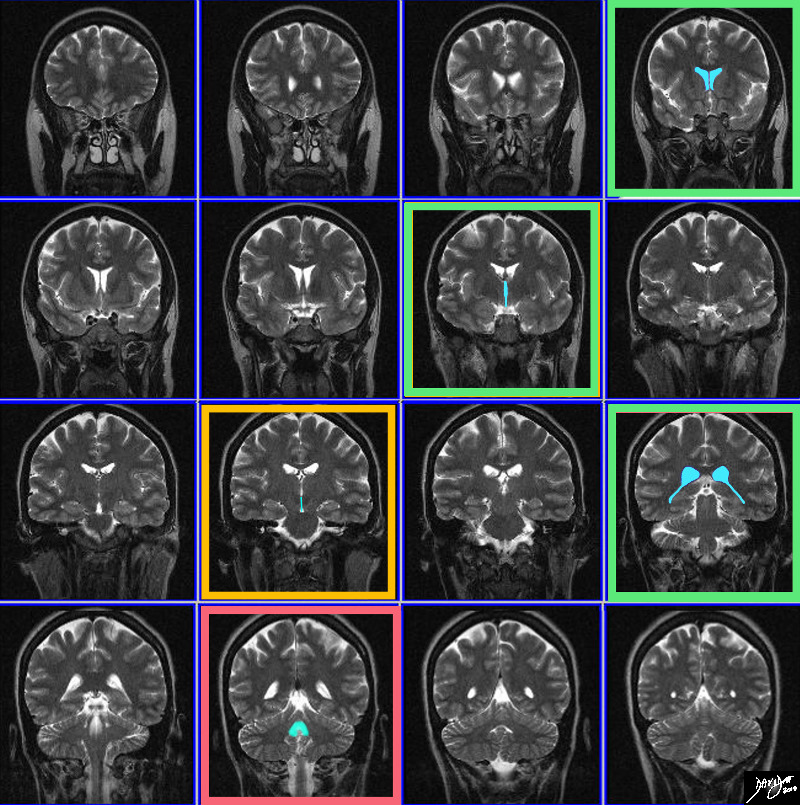The Ventricles
Coronal View
Concepts
The Common Vein Copyright 2010
Introduction
Coronal View
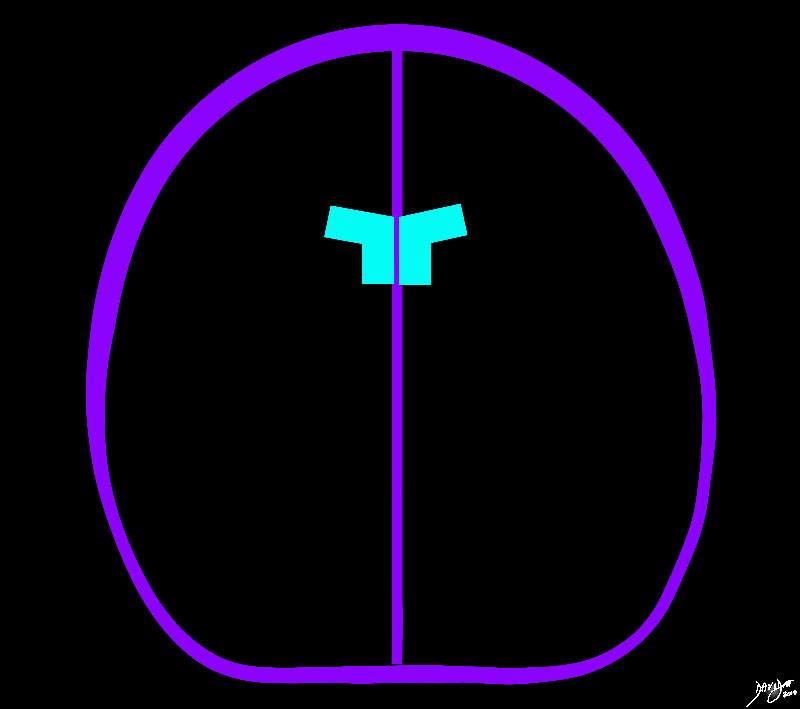
The Frontal Horns |
|
The frontal horns are seen in this coronal diagram of the brain Courtesy Ashley DAvidoff MD copyright 2010 all rights reserved 93914b04d02.8s |
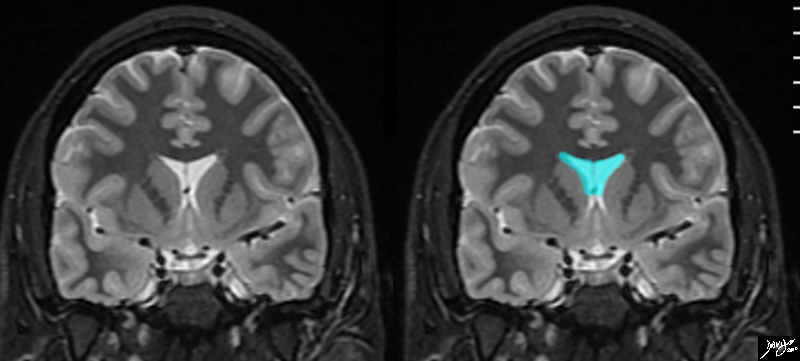
Frontal Horns |
|
The frontal horns are seen in this coronal MRI using a STIR sequence. They are easily recognized as a T shaped midline structure, divided in the middle by the gracile septum pellucidum. The frontal horns course through the frontal lobes and above the anterior portion of the temporal lobes. At this level many of the components of the basal ganglia can be evaluated below and lateral to the frontal horns Courtesy Ashley DAvidoff MD copyright 2010 all rights reserved concepts 89732c01.8s |
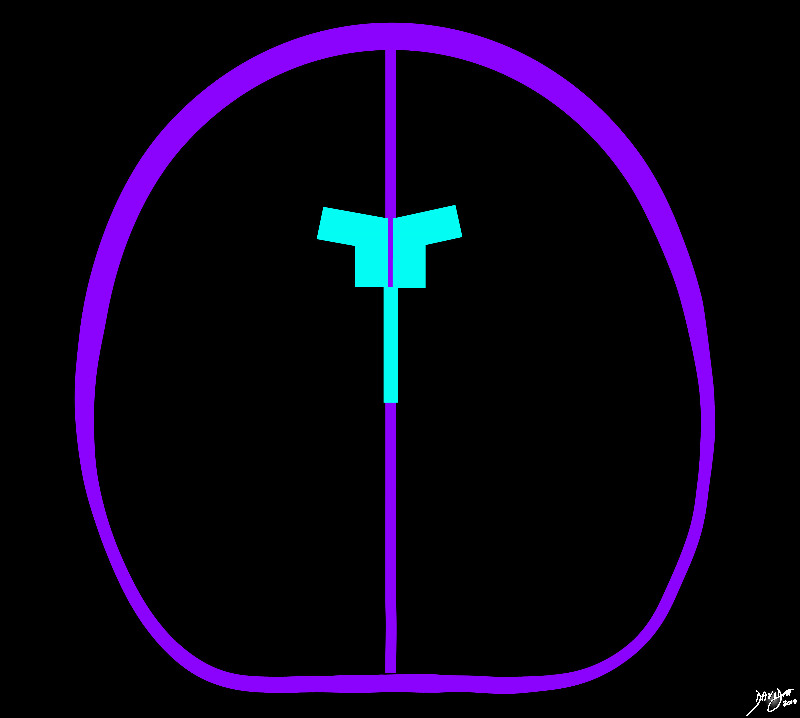
The Third Ventricle |
|
The third ventricle has been added to the coronal diagram of the brain. Courtesy Ashley DAvidoff MD copyright 2010 all rights reserved 93914b04d03.8s |
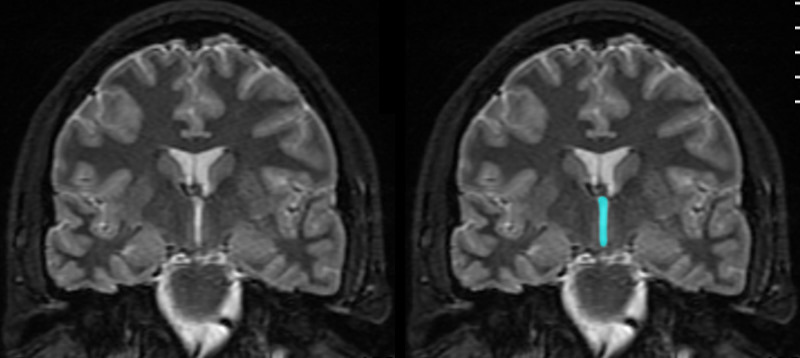
3rd Ventricle |
|
The third ventricle is demonstrated in this coronal MRI using a STIR sequence. It is easily recognized as a relatively narrow capital ” I ” shaped midline structure. It is connected to the lateral ventricles by the foramina of Munro (not obvious on these images). The temporal lobes are still apparent inferiorly at this plane. At this level some of the components of the basal ganglia can be evaluated below the lateral ventricles and lateral to the third ventricle Courtesy Ashley DAvidoff MD copyright 2010 all rights reserved 89735c01.8s |
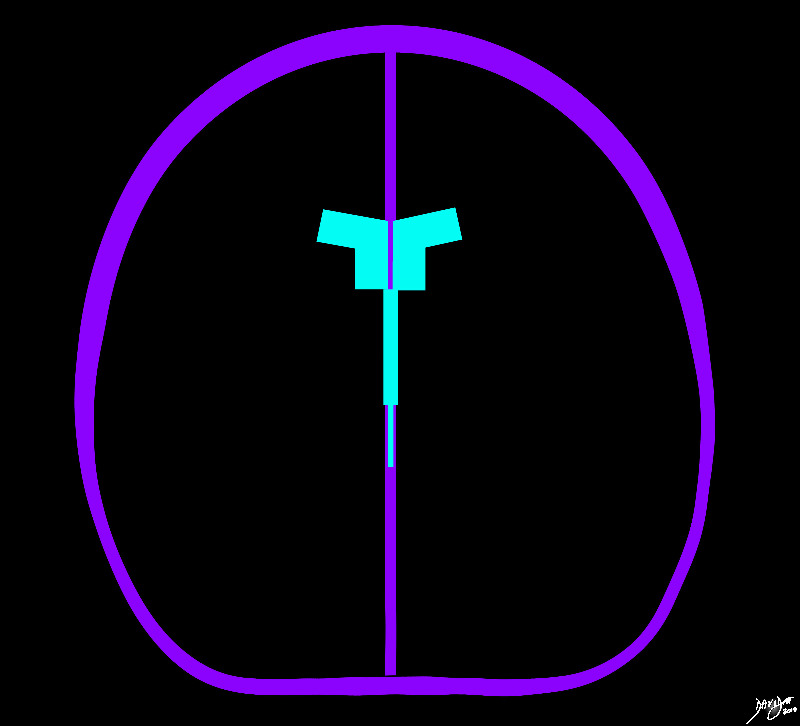
Aqueduct of Sylvius – Cerebral Aqueduct |
|
The aqueduct of Sylvius has been added to the coronal diagram of the brain. Courtesy Ashley DAvidoff MD copyright 2010 all rights reserved 93914b04d04.8s |
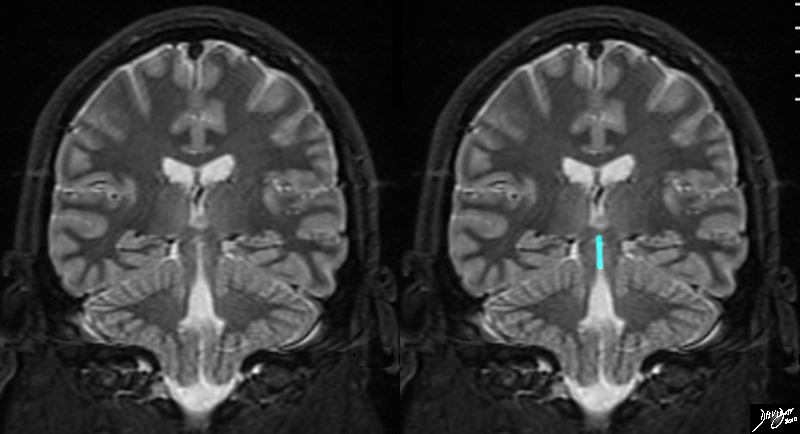
Aqueduct of Sylvius |
|
The aqueduct ofd Sylvius is shown on this coronal MRI using a STIR sequence. It is not always easily nor consistently recognized because of its small size. It is shaped like a very narrow ” I ” and it is a midline structure. As it courses through the midbrain, it lies posterior to the 3rd ventricle. At this level the thalami are usually visible above and the posterior fossa structures including the cerebellum come into view below. Ashley Davidoff MD copyright 2010 all rights reserved concepts 89741c001.8s |
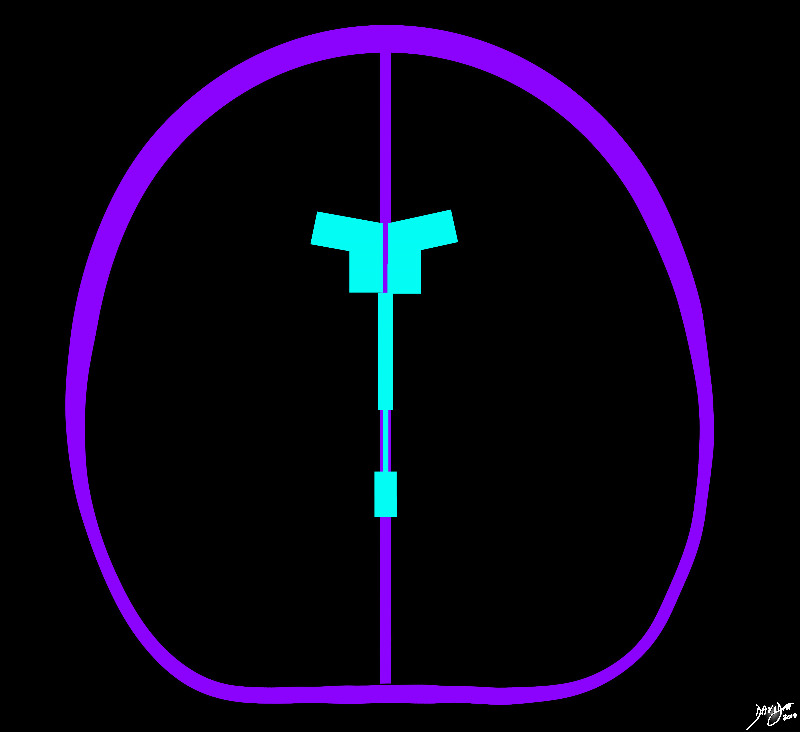
4th Ventricle |
|
The 4th ventricle has been added to the coronal diagram of the brain. Courtesy Ashley DAvidoff MD copyright 2010 all rights reserved 93914b04d05.8s |
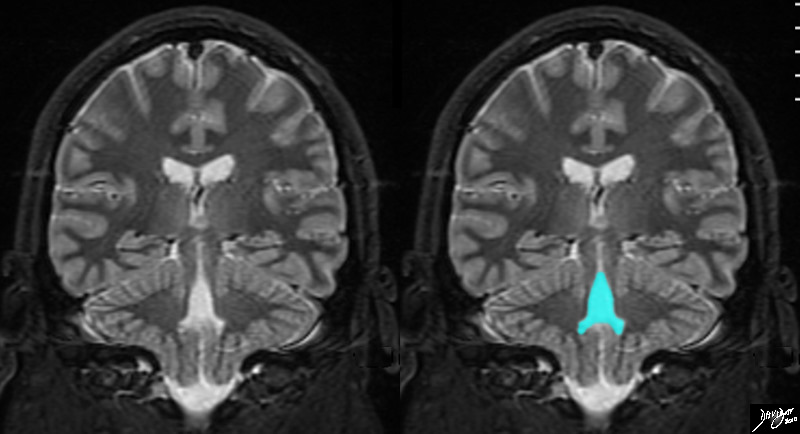
4th Ventricle |
|
The 4th ventricle is demonstrated in this coronal MRI using a STIR sequence. It is easily recognized and takes on a variety of shapes. In this instance it has the shape of a medieval hat or perhaps an elongated bell. It is a midline structure and is situated anterior to the cerebellum and posterior to the pons. Courtesy Ashley Davidoff MD copyright 2010 all rights reserved concepts 89741cb01.8s |
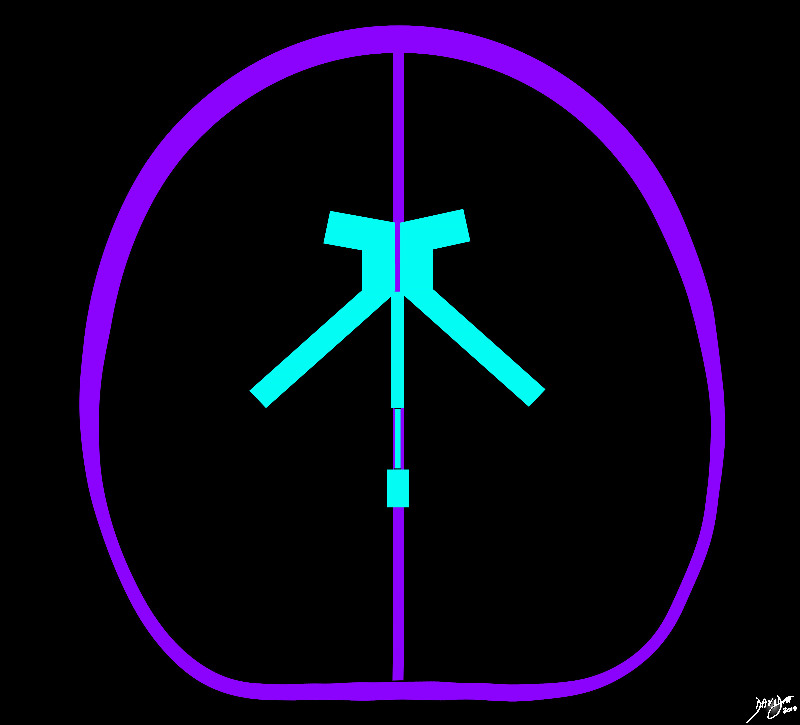
Temporal Horns |
|
The temporal horns have been added to the coronal diagram of the brain. Courtesy Ashley DAvidoff MD copyright 2010 all rights reserved 93914b04d06b.8s |
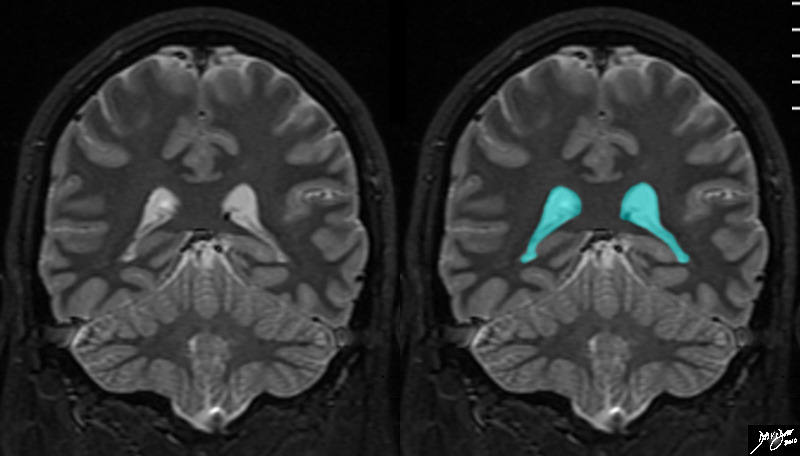
Temporal Horns |
|
The atria and temporal horns are demonstrated in this coronal MRI using a STIR sequence. The tmporal horns are easily recognized as an inveted ‘V shaped structure starting roughly in the midline and courses laterally and inferiorly. They start just anterior to the occipital lobes and end in the temporal lobes and these lobes can be recognized as neighbours of this part of the ventricular system. Courtesy Ashley Davidoff MD copyright 2010 all rights reserved concepts 89744c01.8s |
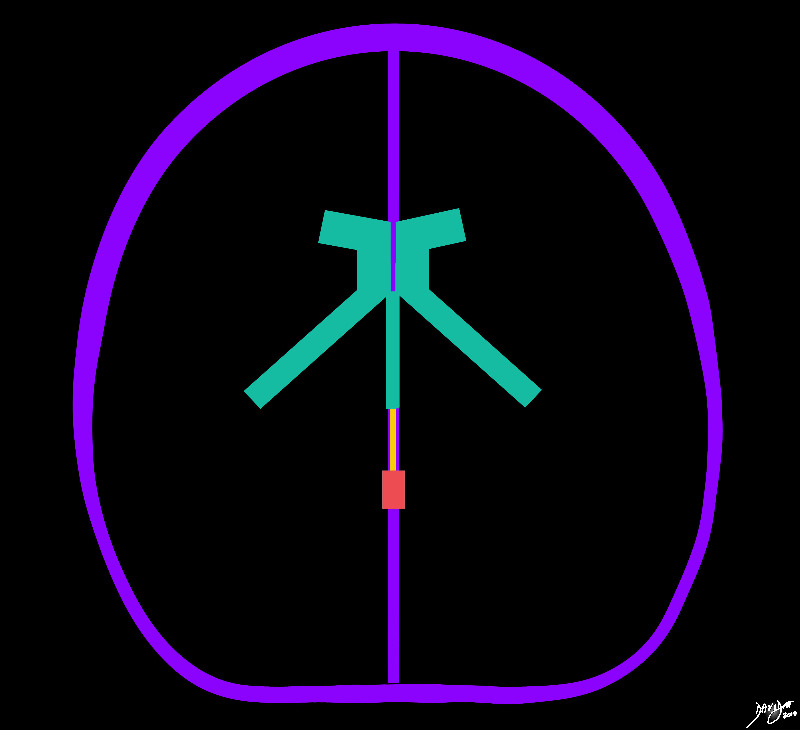
Forebrain Midbrain and Hindbrain Components of the Ventriclar System |
|
The distribution of the ventricular system is demonstrated in this diagram with the forebrain structures (green) including the lateral ventriclesfrontal horns, atria, temporal horns, and third ventricle. The midbrain positioned aqueduct of Sylvius is seen in orange, while the hindbrained positioned 4th ventricle is overlaid in orange Courtesy Ashley DAvidoff MD copyright 2010 all rights reserved 93914b04d07.8s |
|
Overview of the MAjor Levels of the Ventricles in the Coronal Plain |
|
The T2 weighted series reflects progressive imaging of the brain from the most anterior (top left) making progressively posterior cuts as we proceed from left to right in the first row and subsequently in each row till the most posterior cut in the bottom right image. There are 5 basic levels of the ventricles that provide reference points that enable recognition of the ventricular part and will subsequently enable us to recognise the other structures that surround th ventricles. The most anterior cut is the ‘T” shaped frontal horns seen in the top row on the right. The green frame represents its position as being in the forebrain. The next cut is the also still in the forebrain and is the midline slit like shape of the 3rd ventricle. The next level is the barely visible aqueduct of Sylvius in the midbrain (orange) that lies just above the pons. The next level is also the forebrain (green frame and looks like an inverted “V” and represents the posteriorly positioned occipital horns and atria, connected to the more inferiorly placed temporal horns. Lastly the fourth ventricle has almost the same shape as it has in the axial plane – almost an inverted heart. It is in the posterior fossa in the hindbrain. Image Courtesy Philips Medical Systems Image rendered by Ashley Davidoff MD Copyright 2010 all rights reserved 93796b.2kb03.8s |

